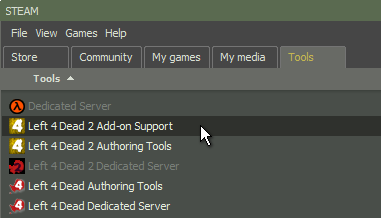

The game is in many ways the same co-op shooter, so its appeal is dependent on whether or not L4D1 was (or might be) your cup of tea. I should mention that there are new weapons for instance, like grenade launchers and melee gear, but it really doesn't alter the experience as much as you'd think. The concept makes for some short and tense matches a drawback is that players have to return to the lobby between maps, or else play the same map over and over again.Īs was said before, there's nothing radical separating Left 4 Dead 2 from its predecessor. Each can returned refills a timer, but the real threat is the infected, who will almost always finish off the opposition before time runs out. Survivor teams have to bring as much gas as they can back to a generator. Survival mode has also returned, but it'll likely be ignored in favor of Scavenge, an addition that duplicates Dead Center's finale across several maps. The zombies could well be tweaked in coming weeks, if Valve's history means anything. Versus presents another challenge altogether, since the new infected coordinate so well under human control that it can feel - just feel - a little unfair. Masochists can turn on Realism mode, which removes the halos around friends and objects, also placing a greater emphasis on headshots. At the multiplayer core of L4D2, completing campaigns on any difficulty beyond Easy can feel like an accomplishment. The odds have been distinctly turned against the survivors in fact, and not in an unwelcome fashion.

Valve clearly doesn't want players standing still for more than a moment, a decision many L4D1 veterans will appreciate as an antidote to dull standoffs. The charger and the jockey are particularly insidious the jockey can drag a survivor away from the group, while a well-timed charger can send a player crashing into a wall or flying off a ledge. There are three new special infected too, those being the charger, the spitter and the jockey. Teamwork becomes more important than ever, as the survivors have no choice but to wander into danger.Ĭompounding matters are new types of regular infected, such as ones in riot control suits that are much harder to kill. Players have to put gas in the aforementioned stock car, which involves collecting fuel cans from a Dawn of the Dead-style mall. The objectives themselves are a little more varied, and nowhere is this more visible than in the finale of the Dead Center campaign. The new crescendos have a lot more impact – turtling strategies have been made difficult or literally impossible, as some events will throw infinite waves of zombies at you until an objective is complete. Valve claims that some levels use minor branching, but in practice, that can be difficult to spot. The best use of this design may be in the “Hard Rain” campaign, where previously familiar terrain is drowned in a downpour, forcing the survivors to head for the rooftops. Those crescendos still exist, but the journey itself can now be as much of a threat, for instance taking players through swamps and burning hotels. Players previously shot their way through creepy but unremarkable terrain to reach crescendo events, where they then shot down waves of regular and special infected until it was safe to move on. Valve has done plenty to break out of the mold established by L4D1. This can largely be attributed to the game's setpieces, which redeem the story and then some. There's just less to get attached to in terms of story, though no one will be turned off completely. While Coach and Ellis have charisma, Rochelle is bland, and Nick is so anti-social that he'll attract as much hate as fandom. The characters are something of a letdown, if mostly in comparison to L4D1. Southern stereotypes abound: the first campaign involves a celebrity stock car, while another takes players into the bayou, and the last is set around New Orleans' famous architecture. The game now has more of a proper story arc, guiding players from Savannah to New Orleans if the five campaigns are played in order. The zombie apocalypse has spread to the deep south, forcing four new survivors – Coach, Ellis, Nick and Rochelle - to escape. The most controversial aspect of L4D2 may be its new story hangings, thankfully secondary to the gameplay. Above this the game tries to refine the L4D formula, something it succeeds at without much trouble. The answer fortunately is that at the least, as Doom II was to Doom, L4D2 is to L4D1: more of a good thing. The new game is on shelves almost exactly a year later after the original, raising the issue of whether it's really worth $50 for a sequel that doesn't bring anything fundamentally different to the table. The unavoidable question with Left 4 Dead 2 is whether it's too similar to its predecessor.


 0 kommentar(er)
0 kommentar(er)
